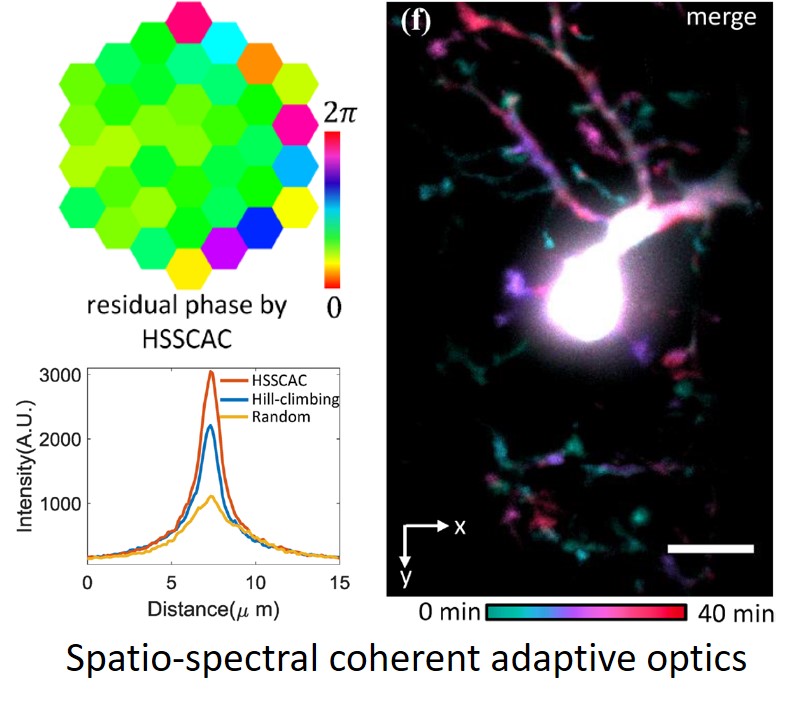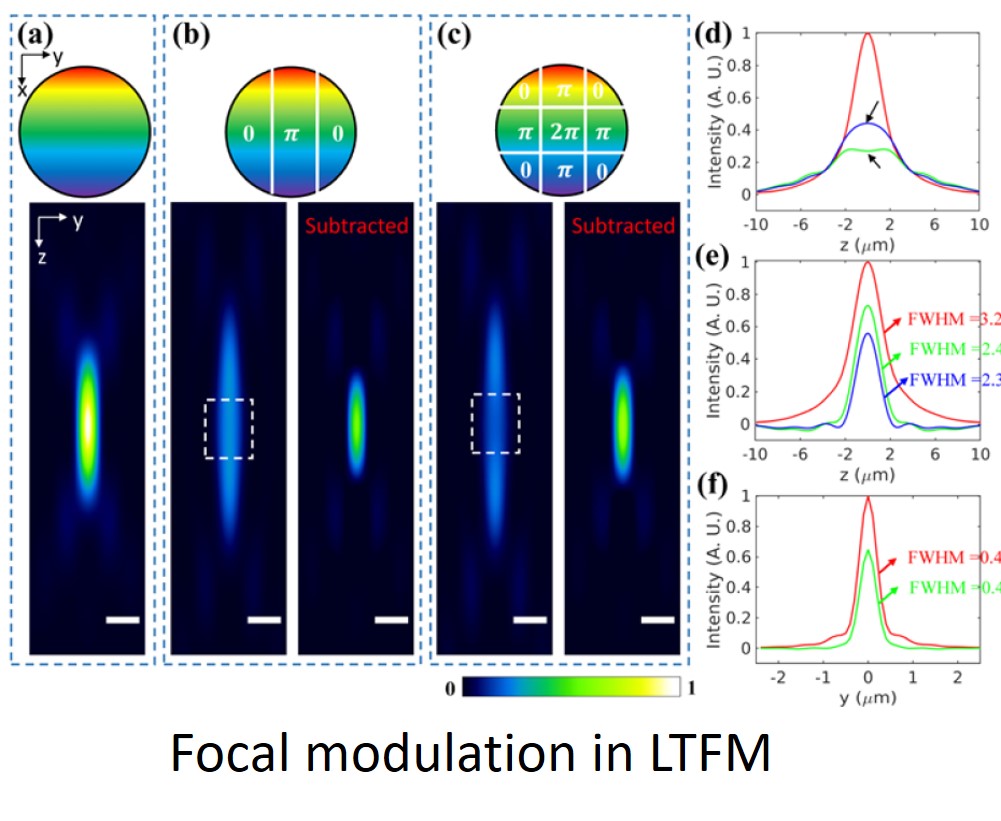Computational Nonlinear Optical Microscopy
Introduction
Understanding the biological intelligence calls for advanced observation methods to reveal large-scale neural dynamics with high spatial and temporal resolution. Nonlinear optical microscopy, including multiphoton microscopy (MPM) and harmonic generation microscopy (HGM), has become an indispensable tool in the research of the nervous system thanks to the nonlinear magic. However, conventional two-photon laser scanning microscopy (2PLSM) is confronted with insurmountable hindrances due to scanner inertia and tissue scattering. Here, We integrate adaptive optics and optimization algorithms with nonlinear microscopy to image faster, deeper with higher contrast in vivo. These computational strategies improve the performance of the imaging system and are promising to be applied to biomedical research.
Highlights
Hybrid spatio-spectral coherent adaptive optics
Hybrid spatio-spectral coherent adaptive compensation
Can fully compensate the aberrations in line-scanning temporal focusing microscopy (LTFM)
in vivo dynamic imaging of microglias in living mouse brains
Zhang, Y., Li, X., Xie, H., Kong, L., & Dai, Q. (2018). Hybrid spatio-spectral coherent adaptive compensation for line-scanning temporal focusing microscopy. Journal of Physics D: Applied Physics, 52(2), 024001

Enhancing axial resolution and background rejection by focal modulation
A spatio-spectral focal modulation technique
Improving the axial resolution by a factor of 1.3
Less peak intensity loss
Deep imaging of cleared mouse brains and in vivo imaging of living mouse brains
Zhang, Y., Kong, L., Xie, H., Han, X., & Dai, Q. (2018). (2018). Enhancing axial resolution and background rejection in line-scanning temporal focusing microscopy by focal modulation. Optics express, 26(17), 21518-21526.

Research Production
Related studies were published on international conferences including Biomedical Optics Congress and Advanced Photonics, international journals like OSA Optics Express, 4 national invention patents were authorized. This project is in collaboration with Professor Lingjie Kong in Department of Precision Instrument, Tsinghua University.
